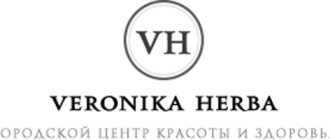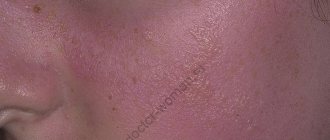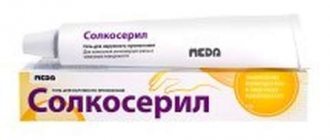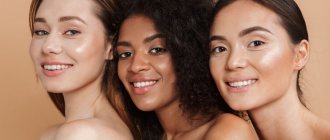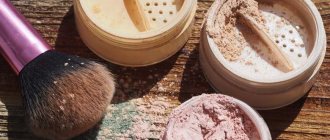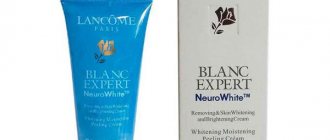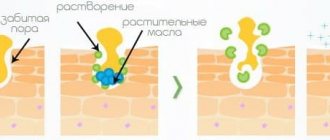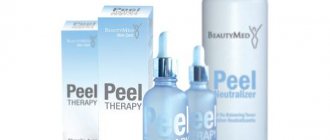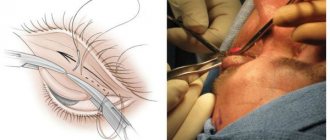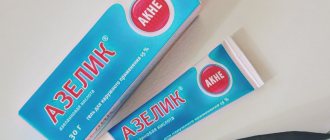“I bought an expensive cream, but it didn’t suit me.” “In winter, I seem to use the same foam, but after washing my face, my face suddenly starts to burn.” All these cases show how important it is to know the type and “habits” of your skin. Just like we know “our” shoe size, clothing size and bra marking.
Each person's skin is individual: it differs in structure, metabolic rate, sensitivity to irritants. Accordingly, our skin looks different and needs different care products.
There are 4 main types of healthy skin:
- Dry
- Normal
- Mixed
- Fat
Your skin type is normal
Lucky you! You are not at war with your skin, but live with it in peace and harmony. But this does not mean that such skin does not require care and will remain problem-free throughout its life. To support nature's gift, follow a few tips:
- use products that are specifically designed for normal skin. Others will either become very oily or dry out.
- Don’t forget to moisturize your skin if you want it to continue to make you happy. Choose light nourishing creams with natural ingredients.
- once a week, no more often, you can use a scrub or make a face mask.
- but the main thing is not to overdo it with funds. You are lucky - your skin is in balance and harmony, functioning correctly without outside help, and a huge number of products can upset this balance.
How to determine your skin type: test and 12 excellent products
Normal or dry
Often, due to the environment and other negative factors, even a normal type can transform into a dry one.
The main rule for such skin is to moisturize so that there is no feeling of tightness. Universal products may suit you - for example, a cream for all skin types. But it is better to choose care depending on the season and skin condition at the moment. 1. Don’t wash your face before leaving the house.
Cleansing milk Demaquillante, Uriage
533
Buy
Especially if the temperature outside is sub-zero. Hot and very cold water when washing your face will dry out your skin. Facial cleansing milk will help you, as it removes the remnants of decorative cosmetics and gives your face moisture.
2. Avoid cosmetics that contain alcohol
Moisturizing tonic Lotion Tonique Hydratante, Caudalie
734
Buy
Lotions and tonics with this composition are not your friends. Choose products for dry skin with plant extracts.
3. Skin hydration is task number one
Refreshing moisturizing care cream with iris, Weleda
759
Buy
During the cold season, this type needs not only hydration, but also nutrition. Start your morning with a moisturizer that will protect your skin from moisture loss. Thanks to its weightless consistency, it is instantly absorbed without clogging pores. If you use foundation or powder in your daily makeup, then apply a light moisturizing fluid as a base.
4. Don't forget to take care of yourself during the day.
Thermal Spring water, La Roche-Posay
311
Buy
When the skin needs increased hydration, especially in a room with air conditioning or radiators, thermal water will help. Keep the bottle on your desk - the product will instantly refresh your skin and save it from dryness.
Normal and oily
This type needs special and careful care. Due to the fact that the sebaceous glands work intensively, shine often appears on the face, pores become noticeable, often become clogged and can become inflamed, forming acne. But because of sebum, your face is less susceptible to aging, and you will remain young longer.
1. Do not use soap or hot water for cleaning.
Anti-Blemish Solutions Cleansing Gel, Clinique
1 750
Buy
Choose soft gels for washing, and after cleansing, use lotion or toner for oily skin. Not only does it have anti-inflammatory properties, but it will also tighten pores, reducing shine.
2. Don’t get carried away with alcohol-based products
Toning lotion with iris extract, Clarins
1 259
Buy
Instead of alcohol-containing lotions, use products with herbal extracts that will help soothe inflammation and relieve irritation.
3. Additionally nourish and moisturize the skin
Nourishing cream pudding with pomegranate juice, Frudia
1 324
Buy
Oily skin types need vitamins and microelements in their composition. And for daily care, choose products designed for your type.
4. Exfoliate several times a week
Peeling roll with chamomile, Librederm
250
Buy
It will help remove dead cells and start the skin renewal process. Contains fruit acids, essential oils, Dead Sea minerals or natural ingredients.
5. Do face masks several times a week
Cleansing sebum-regulating face mask Effaclar Mask, La Roche Posay
671
Buy
Special products for oily and problem skin help remove shine, inflammation from the face, and tighten pores. But you should always apply them to a cleansed face, leave for the prescribed time and rinse with warm water.
Combined and sensitive
This is the most complex and common type, which can combine dry and oily areas. This means that different areas of the face will require their own products.
1. Facial cleansing should be gentle.
Soothing Cleanser Comfort Foam, SkinCeuticals
2 780
Buy
Foams and mousses for gentle cleansing that contain plant extracts (chamomile, gammomelis extract) and anti-inflammatory components (tea tree, lactic acid) are suitable for you. They not only cleanse the skin, but help it stay hydrated throughout the day.
2. Choose creams and serums for mixed skin types
Soothing product Créme No. 2 Cachemire, Payot
3 260
Buy
They can be two-phase - combining two textures in one bottle, but the main thing is that they must contain protective components to protect sensitive skin from temperature changes, exposure to the sun and wind and other negative environmental factors.
3. Make masks - they will help make your complexion more even.
Brightening mask Dermask Micro Jet Brightening Solution, Dr. Jart+
376
Buy
Especially with marine components in the composition. Thanks to the active ingredients, skin cells will begin to work better, and the face will take on a radiant, healthy appearance. Fabric versions work well as SOS products - masks for all skin types.
Photo: unsplash.com
Your skin type is dry
Your main goal is to sufficiently moisturize the skin to remove peeling, irritation and an uncomfortable feeling of tightness.
- The number one tip for you is to find the right moisturizer.
- avoid harsh cleansers - anything that “cleanses the skin well” is contraindicated for you, because the composition of these products strongly draws oil from the skin, of which you already have very little
- Wash your face no more than twice a day and preferably do it with cold water. Hot water dries out the skin very much, so such procedures are definitely not suitable for you.
- Don’t get carried away with peeling and scrubs. Yes, it is a big temptation to remove flaky pieces of skin every day, but another feature of this type is that its skin is very thin. Constant scraping will cause micro cracks and draw out the last drops of oil from your skin.
Your skin type is oily
Your sebaceous glands are so active that they produce much more sebum than other skin types. This is the first thing that worries you and what you should fight.
- Don't use drying products. At first glance, the easiest way to get rid of sebum is to dry your skin. But when you use too aggressive products, your pores begin to work even more actively, so this tactic often leads to the opposite results
- choose a light moisturizer. It's possible that your glands are working so hard because of lack of hydration.
- Don't forget to exfoliate your skin regularly to prevent clogged pores and lead to breakouts on your face.
- Be careful with products with oil, they can only aggravate fat content
Test yourself
If you cannot immediately determine your skin type, a small test will help you. You will need good lighting, a mirror, and cosmetic wipes.
Wash your face or use cosmetic milk. Look carefully at your face in the mirror.
After 2 hours, repeat the inspection and choose your answers to 6 questions
- You look in the mirror. Pores of your skin:
- Almost invisible
- Small, but still visible
- Extended in the area of the nose, forehead
- Large
- Apply a cosmetic tissue to your cheek, nose, forehead, chin:
- No greasy marks
- Light prints, almost indistinguishable
- There are prints left from the nose, chin, forehead
- Clear fingerprints from every touch
- The skin tightens and there is a feeling of dryness
- The face is smooth, there are no unpleasant sensations
- In some areas the skin is smooth, in others it is flaky
- Pleasant feeling of freshness
- Tight, slightly itchy
- Fresh, clean
- Shiny on the forehead, and (or) nose, chin
- Oily in almost all areas of the face
- Never
- Very rarely, usually once a month
- Sometimes on the forehead, nose, chin
- Often
- The skin becomes very dry, chapped and flaky in winter.
- The skin tolerates heat and cold equally, it becomes a little drier in winter
- Skin becomes oilier in summer than in winter
- The skin tolerates winter well, but in summer pimples and blackheads appear much more often.
Your skin type is combination
This is the most common skin type and the most difficult to work with because some areas are oily and some are too dry. You need to choose care products correctly and very carefully so as not to aggravate the situation.
- Give preference to natural ingredients. If you give preference to aggressive care for oily skin, you will dry out already dry areas even more. And vice versa - too moisturizing tactics will clog your sebaceous glands and make them work even harder.
- Use two moisturizers. The first should be light for your oily T-zone, and the second oilier for dry areas.
- Be sure to use scrubs regularly. On dry areas you will remove dead skin particles, and on oily areas you will free clogged pores.
Assessing the patient’s skin condition is one of the main stages in the work of a cosmetologist, and it is carried out at the very first meeting. There is a diagnostic algorithm using the table of Leslie Baumann, a professor and author of works on cosmetic dermatology. The table is quite simple and very convenient for the work of a practicing cosmetologist. Further, during therapy, the diagnosis is clarified, but on an established basis.
Baumann Skin Type Indicator
To determine your skin type, you need to evaluate its four main characteristics: dry or oily, pigmented or not pigmented, with or without wrinkles. As a result, we get 16 possible skin types, each of which requires a separate cosmetic care tactic. Obviously, a lady of elegant age with dry, sensitive, pigmented skin and pronounced wrinkles needs completely different medications and procedures than a girl with oily, resistant, smooth skin of an even tone. That is, it should be taken into account that a separate solution is required not only for the problem of an individual skin type, but also for the totality of its subtypes.
Baumann Skin Type Chart
Explanation of symbols: D – dry, dry; N – nonpigmented, without pigmentation; O – oily, fatty; P – pigmented, pigmented; R – resistant, resistant; S – sensitive, sensitive; T – tight, smooth; W – wrinkled, wrinkled.
The Baumann classification suggests:
• division of skin into two basic types – D (dry) and O (oily); • additional division by condition - S (sensitive) and R (resistant). In this case, S skin can be of the following subtypes: S1 - acne; S2 – rosacea; S3 – constant feeling of burning and tightening; S4 – tendency to develop contact and allergic dermatitis • based on the presence of pigmentation – P (pigmented) and N (non-pigmented). In skin P, it is necessary to additionally make a dermatological diagnosis: lentigo, melasma, post-inflammatory or post-traumatic hyperpigmentation, freckles, ethnically dark skin; • Finally, W (wrinkles) and T (smooth skin) are highlighted.
Thus, when determining the skin type of each patient, not only sebum production is taken into account, but also skin sensitivity with an additional determination of the sensitivity subtype; presence or absence of pigmentation disorders; the presence or absence of wrinkles as the main marker of age-related skin changes. If during therapy the diagnosis needs to be clarified or revised - for example, when it is possible to cope with pigmentation disorders, P will be replaced in the diagnosis by N. After successful acne therapy, S can be removed and replaced with R, etc.

